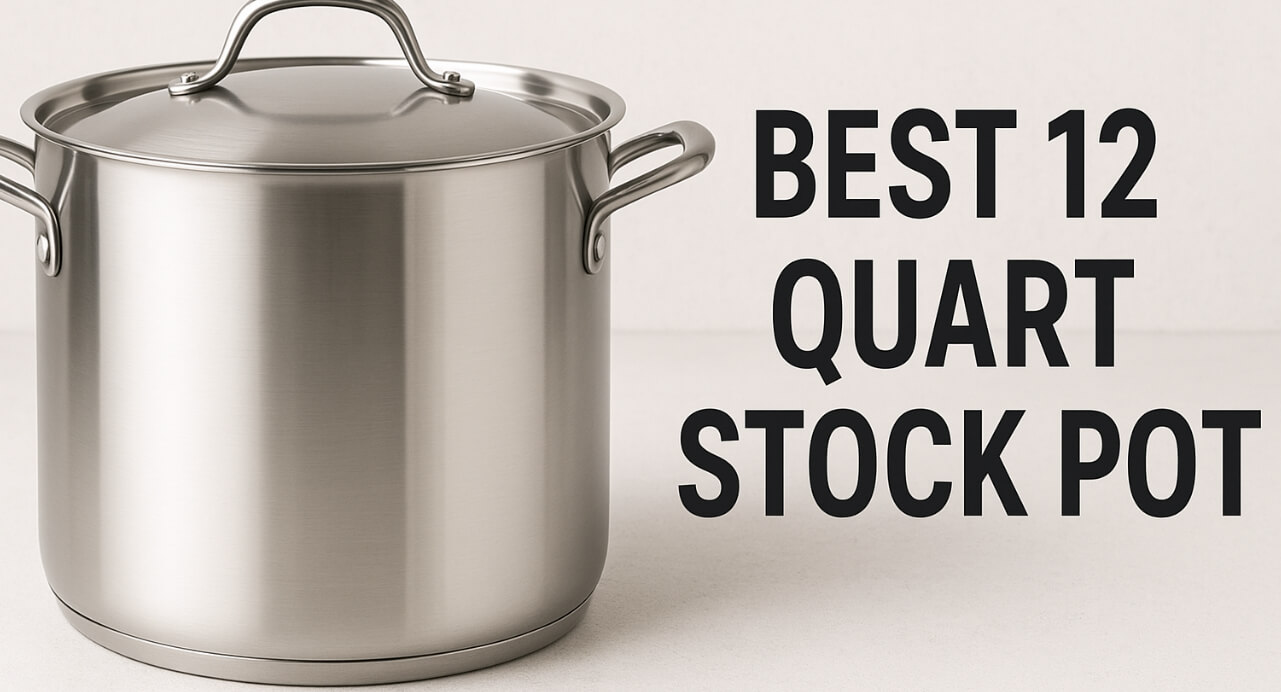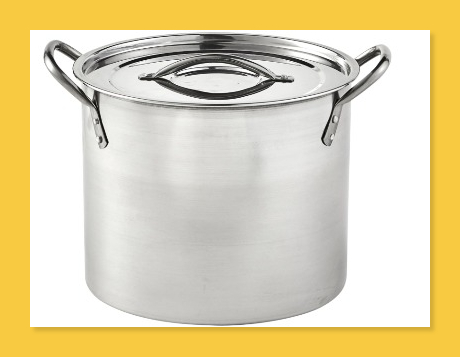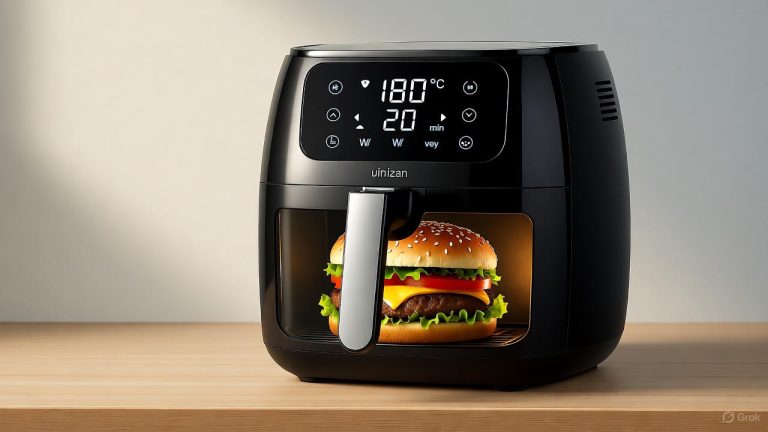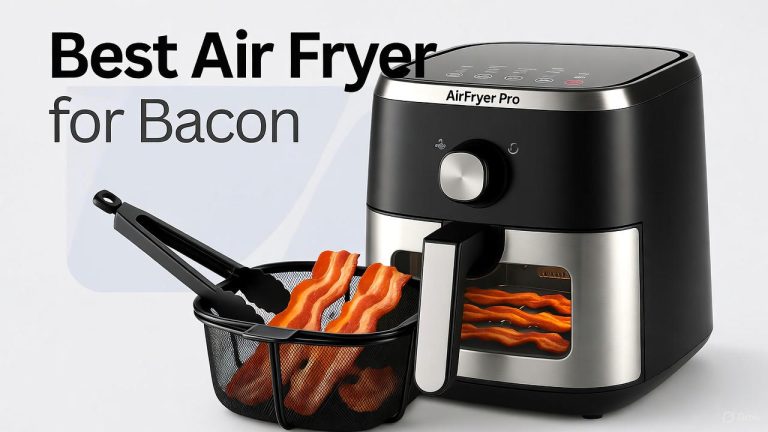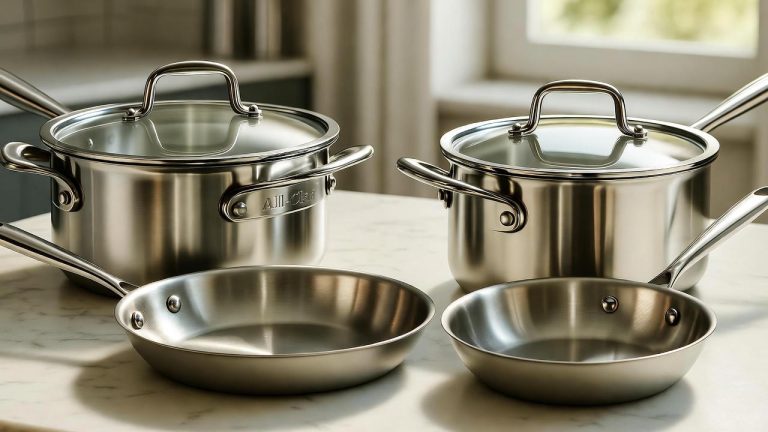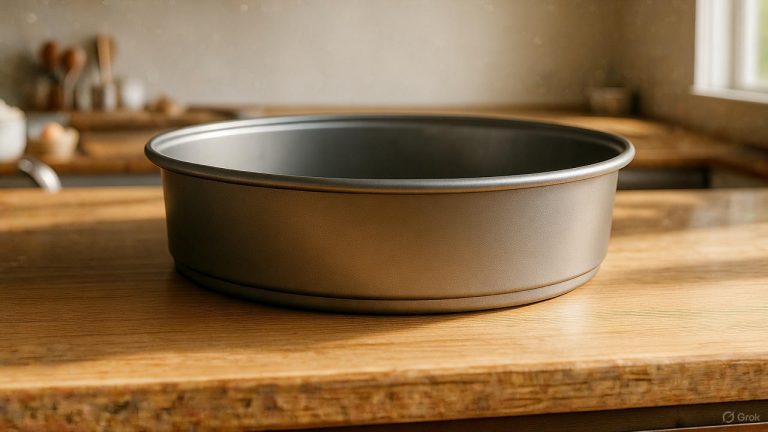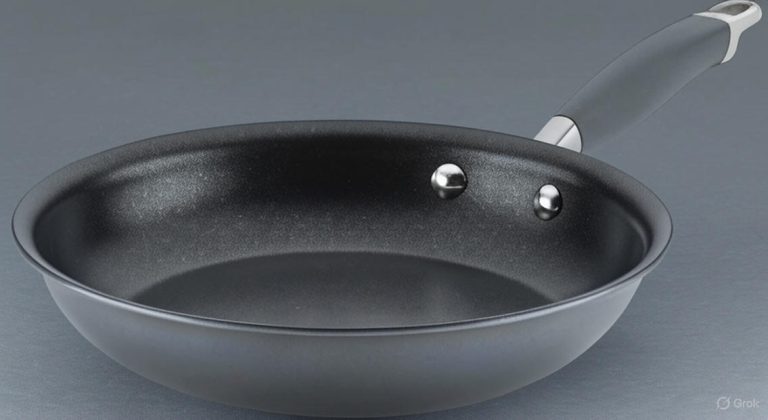5 Best 12-Quart Stock Pots In 2025
Home cooks and professional chefs alike know that a quality 12-quart stock pot stands as one of the most essential pieces of cookware in any kitchen. These large-capacity vessels transform your cooking capabilities, enabling you to prepare massive batches of soup, simmer rich stocks for hours, boil pasta for crowds, and tackle ambitious meal prep sessions with confidence.
Finding the perfect 12-quart stock pot requires careful consideration of materials, construction quality, heat distribution, handle design, and overall durability. After extensive research and analysis, we’ve compiled this comprehensive guide featuring five outstanding stock pots that deliver exceptional performance across different price points and cooking styles.
Why Every Kitchen Needs a 12-Quart Stock Pot
Large stock pots serve multiple purposes beyond their obvious soup-making capabilities. These versatile vessels excel at batch cooking, allowing you to prepare multiple meals simultaneously. They accommodate whole chickens for stock preparation, handle large quantities of pasta water, and provide ample space for steaming vegetables or seafood.
Professional kitchens rely heavily on large stock pots because they understand the efficiency of cooking in volume. Home cooks benefit from this same principle, especially when feeding large families, hosting dinner parties, or engaging in meal preparation activities. The generous capacity means fewer cooking sessions and more efficient use of your time and energy.
Temperature control becomes crucial when working with large volumes of liquid. Quality stock pots distribute heat evenly across their base and up the sidewalls, preventing hot spots that can scorch delicate broths or cause uneven cooking. This even heating capability proves essential for developing complex flavors in stocks and soups that require long, slow simmering periods.
Top 5 Best 12-Quart Stock Pots: Detailed Reviews
1. IMUSA 12 Quart Stainless Steel Stock Pot with Lid
The IMUSA stainless steel stock pot delivers remarkable value for budget-conscious cooks without compromising on essential features. This straightforward design focuses on functionality and durability, making it an excellent entry point for those new to large-batch cooking.
Construction and Materials
IMUSA constructs this stock pot from durable stainless steel that resists corrosion and maintains its appearance through countless cooking sessions. The material choice ensures compatibility with all cooktop types, including induction surfaces. The sturdy construction feels substantial without becoming unwieldy, striking an ideal balance for everyday use.
The riveted handles provide secure grip points that remain cool during stovetop cooking. These handles demonstrate thoughtful engineering, offering enough clearance for gloved hands while maintaining structural integrity under the weight of a full pot. The riveted attachment method proves more durable than welded alternatives, reducing the likelihood of handle separation over time.
Performance Characteristics
Heat distribution across the base performs adequately for most cooking tasks, though rapid temperature changes may create minor hot spots. The pot reaches boiling temperatures efficiently and maintains steady simmering conditions well. For stock preparation and soup making, this performance level satisfies most home cooking requirements.
The lid fits securely without being difficult to remove, creating proper steam circulation while preventing excessive evaporation during long cooking sessions. This balance proves important for developing concentrated flavors in stocks and reducing liquids to desired consistency.
Pros and Cons
Strengths include exceptional value pricing, dishwasher-safe convenience, and universal cooktop compatibility. The straightforward design eliminates unnecessary complexity while delivering reliable performance. Maintenance remains simple, with stainless steel surfaces that clean easily and resist staining.
Limitations center around heat distribution consistency and the basic handle design. While functional, the handles lack ergonomic refinements found in premium models. The base thickness, while adequate, doesn’t match the heat retention capabilities of more expensive alternatives.
Best For
This stock pot suits budget-conscious cooks who need reliable large-capacity cooking without premium features. It excels for occasional use, starter kitchens, and situations where basic functionality takes priority over advanced performance characteristics.
2. Cook N Home Stockpot Sauce Pot Induction Pot With Lid Professional Stainless Steel 12 Quart
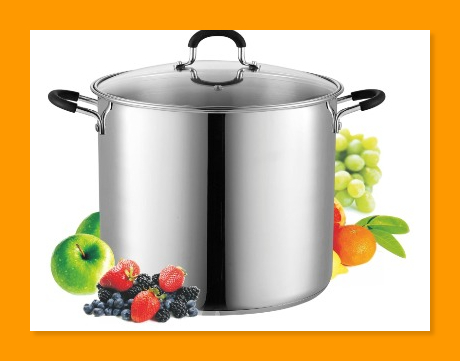
The Cook N Home Stainless Steel Stockpot with Lid 12 Quart rose to the top of rankings by America’s Test Kitchen, earning recognition for its professional-grade construction and superior performance characteristics. This model represents excellent value in the mid-range price category.
Professional Construction Features
Cook N Home builds this stock pot with professional-grade stainless steel that demonstrates exceptional durability and heat retention properties. The tri-ply construction incorporates an aluminum core between stainless steel layers, creating superior heat conduction throughout the entire pot body, not just the base.
The stay-cool handles feature ergonomic design that reduces hand fatigue during extended cooking sessions. These handles remain comfortable to grip even when the pot contains heavy loads, and their temperature resistance eliminates the need for pot holders during normal stovetop operations.
Superior Heat Distribution
The aluminum core construction ensures even heat distribution that eliminates hot spots and reduces scorching risks. This even heating proves particularly valuable for delicate operations like making roux-based sauces or maintaining gentle simmers for stock preparation.
Heat retention capabilities exceed those of single-layer alternatives, meaning the pot maintains temperature more effectively when removed from heat sources. This characteristic benefits both energy efficiency and cooking consistency, especially during serving or when transferring between cooking locations.
Professional Performance
Induction compatibility makes this pot suitable for modern cooking surfaces while maintaining excellent performance on gas and electric ranges. The magnetic base responds quickly to temperature adjustments, providing precise control over cooking conditions.
The heavy-gauge construction resists warping even under extreme temperature changes, maintaining flat base contact with heating elements throughout its lifespan. This stability proves crucial for maintaining even heating and preventing cooking inconsistencies.
Dishwasher Safety and Maintenance
Complete dishwasher safety simplifies cleanup after large cooking sessions. The stainless steel surfaces resist staining and maintain their appearance through repeated washing cycles. Hand washing remains easy when preferred, with surfaces that release food residue readily.
The mirror finish adds professional appearance while serving practical purposes. This finish resists fingerprints and water spots better than brushed alternatives, maintaining an attractive appearance with minimal maintenance effort.
Ideal Applications
This stock pot excels in demanding cooking situations where performance and reliability matter most. It handles professional-level tasks like stock preparation, large-batch sauce making, and extended braising operations with exceptional results.
3. T-fal Specialty Nonstick Stockpot With Lid 12 Quart
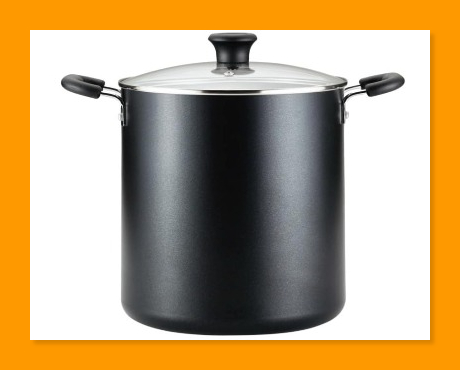
T-fal brings innovative nonstick technology to large-capacity cooking with this specialty stock pot that challenges traditional assumptions about nonstick limitations. The advanced coating system delivers superior release properties while maintaining durability under normal stock pot applications.
Advanced Nonstick Technology
The proprietary nonstick coating system goes beyond basic applications, incorporating multiple layers that enhance both performance and longevity. This coating prevents sticking issues that commonly plague traditional stock pots, especially when working with dairy-based soups or tomato sauces that tend to adhere to metal surfaces.
Heat tolerance extends to 350°F in oven applications, expanding the pot’s versatility beyond stovetop use. This capability enables techniques like oven-braising large cuts of meat or finishing dishes under broiler heat, adding flexibility to your cooking approaches.
Ergonomic Handle Design
Stay-cool handles incorporate heat-resistant materials that remain comfortable throughout extended cooking sessions. The ergonomic shaping reduces wrist strain when maneuvering heavy loads, and the secure attachment method prevents wobbling or loosening over time.
Handle positioning provides optimal balance when lifting or pouring, reducing the physical demands of working with large quantities of food. This design consideration proves especially valuable for cooks who frequently prepare large batches or have ergonomic concerns.
Easy Cleanup Benefits
Nonstick surfaces dramatically reduce cleanup time and effort compared to traditional stainless steel alternatives. Food releases easily without aggressive scrubbing, preserving the coating integrity while simplifying maintenance routines.
Dishwasher compatibility extends convenience further, though hand washing helps preserve the nonstick properties longer. The smooth surfaces resist bacterial buildup and clean thoroughly with minimal detergent, supporting good kitchen hygiene practices.
Cooking Performance
Heat distribution performs well across the aluminum base, though the nonstick coating can limit browning capabilities for certain techniques. The pot excels at gentle cooking methods like simmering and poaching while handling boiling operations efficiently.
The black interior provides visual contrast that helps monitor food color changes during cooking. This visibility advantage proves helpful when developing proper caramelization or monitoring doneness indicators that rely on visual cues.
Long-term Considerations
Nonstick coatings require more careful handling than stainless steel alternatives. Avoiding metal utensils and excessive heat helps preserve the coating integrity. While this requires some adjustment for traditional stock pot users, the cleanup benefits often justify the extra care required.
The coating system demonstrates good durability under proper use conditions, though it will eventually require replacement like all nonstick cookware. The performance benefits during the effective lifespan often offset this limitation for many users.
4. Rachael Ray Enamel on Steel Stock Pot/Stockpot with Lid, 12 Quart, Marine Blue
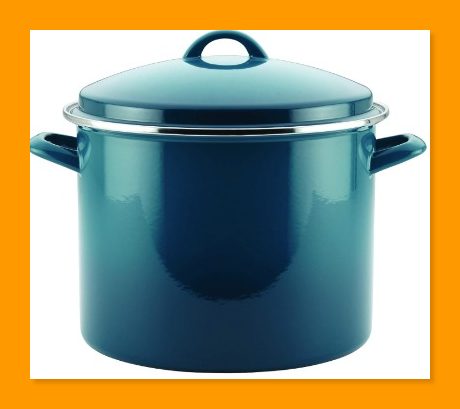
Rachael Ray combines practical functionality with distinctive styling in this enamel-coated steel stock pot that brings color and personality to your cooking routine. The marine blue finish creates visual appeal while delivering solid performance characteristics for everyday cooking needs.
Enamel Coating Benefits
The porcelain enamel exterior provides excellent heat retention while creating an attractive appearance that transitions seamlessly from stovetop to table. This coating resists chipping and staining better than painted finishes while maintaining color vibrancy through repeated use.
Interior enamel surfaces offer natural nonstick properties without synthetic coatings, making them safe for high-heat applications and metal utensil use. These surfaces clean easily while developing improved nonstick characteristics with proper seasoning and use over time.
Stylish Design Elements
The marine blue colorway adds personality to kitchen spaces while coordinating well with various design schemes. This aesthetic appeal makes the pot suitable for serving directly from stove to table, eliminating transfer steps and reducing cleanup requirements.
Dual-riveted handles provide secure attachment while incorporating silicone grips that enhance comfort and heat resistance. The handles maintain a secure feel even when wet, improving safety during handling of heavy loads.
Heat Performance
Steel construction with enamel coating creates excellent heat retention that maintains cooking temperatures effectively. The material combination responds well to temperature adjustments while providing steady, consistent heating for extended cooking periods.
Base design distributes heat adequately across the cooking surface, though some users may notice minor hot spots during aggressive heating. For typical stock pot applications involving liquids, this performance level proves entirely adequate.
Maintenance and Care
Enamel surfaces require gentler care than stainless steel alternatives but reward proper treatment with excellent longevity. Hand washing preserves the finish best, though dishwasher use remains possible with proper rack positioning and gentle cycle selection.
The smooth enamel interior releases food easily and resists staining from tomato-based sauces or other pigmented ingredients. This stain resistance maintains the pot’s appearance and prevents flavor transfer between different cooking sessions.
Value Proposition
This stock pot provides solid performance with distinctive styling at a reasonable price point. The combination of functionality and aesthetic appeal suits cooks who want their cookware to serve double duty as serving pieces.
5. Cuisinart 12-Quart Stockpot w/Lid, Chef’s Classic Collection, Silver
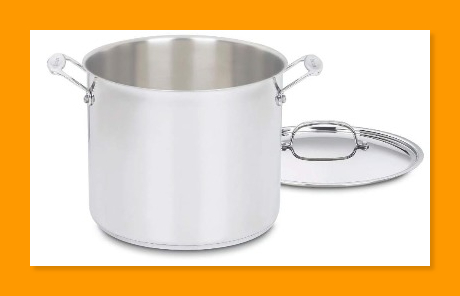
Inspired by the kitchens of France, the elegant Cuisinart Chef’s Classic Stainless Cookware Collection features stainless steel and pure aluminum encapsulated in the base for fast and even heating. This premium option delivers professional performance with refined construction details.
Premium Construction Quality
Cuisinart employs high-grade 18/10 stainless steel throughout this stock pot’s construction, providing superior corrosion resistance and maintaining pristine appearance through years of use. The material choice ensures compatibility with all cooking surfaces while delivering excellent durability characteristics.
The aluminum-encapsulated base creates superior heat conduction that eliminates hot spots and provides even temperature distribution. This construction method, where aluminum extends fully across the base, surpasses simple disc-bottom designs in performance and longevity.
Professional-Grade Features
Cool Grip handles incorporate stay-cool technology that maintains comfortable temperatures even during extended cooking sessions. The handles attach with solid rivets that demonstrate commercial-grade durability, capable of supporting the full weight of a loaded pot without flexing or loosening.
The tight-fitting lid creates proper seal conditions that retain moisture and heat while allowing controlled steam release. This lid design proves essential for developing rich stocks and maintaining consistent cooking conditions throughout long simmering periods.
Mirror Finish Excellence
The polished mirror finish provides both aesthetic appeal and practical benefits. This surface resists fingerprints and water spots while cleaning easily to maintain professional appearance. The finish quality reflects the overall attention to detail throughout the pot’s construction.
Interior surfaces remain smooth and non-reactive, preserving food flavors and preventing metallic tastes that can develop with lower-grade stainless steel. This flavor neutrality proves crucial for delicate stocks and light-colored sauces.
Cooking Performance Excellence
Heat distribution across the base and up the sidewalls creates uniform cooking conditions that professional chefs demand. The pot reaches desired temperatures quickly while maintaining steady heat output for consistent results.
Temperature responsiveness allows precise control over cooking conditions, essential for techniques requiring specific heat levels. The pot adjusts quickly to burner changes while retaining enough thermal mass to prevent temperature fluctuations when adding ingredients.
Investment Value
While commanding a premium price, this stock pot delivers long-term value through superior construction and performance. The commercial-grade build quality suggests decades of reliable service under normal home use conditions.
The comprehensive design addresses every aspect of stock pot functionality, from heat distribution to handle comfort to maintenance ease. This attention to detail justifies the investment for serious cooks who demand professional results.
Essential Features to Consider When Buying a 12-Quart Stock Pot
Material Construction Impact
Stainless steel remains the gold standard for stock pot construction due to its durability, non-reactivity, and maintenance ease. High-quality stainless steel resists corrosion while maintaining neutral flavors that won’t interfere with delicate broths or light sauces.
Aluminum cores or bases enhance heat conduction significantly compared to pure stainless steel construction. This improvement creates more even heating and reduces energy consumption while cooking. Look for full aluminum core construction rather than simple aluminum disc bases for optimal performance.
Copper cores offer superior heat conductivity but command premium prices and require more maintenance. For most home cooks, aluminum core construction provides excellent performance at more accessible price points.
Handle Design Importance
Comfortable, heat-resistant handles become crucial when working with large quantities of hot liquid. Poorly designed handles create safety hazards and make the pot difficult to maneuver when fully loaded.
Riveted handles generally offer superior durability compared to welded alternatives. The riveting process creates mechanical connections that resist loosening over time, even under heavy use conditions. Inspect rivet quality during purchase to ensure smooth, secure attachment.
Handle positioning affects balance and control when lifting or pouring. Handles placed too low create awkward lifting angles, while those positioned too high may interfere with lid placement or storage. Optimal handle placement balances accessibility with pot stability.
Lid Considerations
Tight-fitting lids retain heat and moisture while preventing excessive evaporation during long cooking sessions. Poor lid fit leads to energy waste and requires constant liquid monitoring to prevent burning or over-concentration.
Glass lids offer visibility advantages that allow monitoring without removing the lid and losing heat. However, glass lids may not retain heat as effectively as metal alternatives and can be more fragile during handling or storage.
Metal lids typically provide superior heat retention and durability but eliminate visual monitoring capabilities. Consider your cooking style and monitoring preferences when evaluating lid materials.
Base Design and Thickness
Thick, heavy bases distribute heat more evenly and reduce hot spot formation compared to thin alternatives. This even heating proves essential for delicate operations like making custard-based soups or maintaining gentle simmers without scorching.
Flat base construction ensures proper contact with heating elements, maximizing heat transfer efficiency. Warped or uneven bases create unstable cooking conditions and waste energy through poor heat contact.
Induction compatibility requires magnetic base materials. If you use or plan to use induction cooking, verify compatibility before purchase to avoid future limitations.
Size and Capacity Planning
Twelve-quart capacity suits most home cooking needs while remaining manageable for single cooks. This size handles everything from small family meals to large gathering preparations without requiring multiple pots or excessive storage space.
Consider your typical cooking volumes when evaluating capacity needs. Larger families or frequent entertainers may benefit from even larger sizes, while smaller households might find 12 quarts excessive for regular use.
Storage space limitations may influence size decisions. Large stock pots require significant cabinet or pantry space, so measure your storage areas before purchasing to ensure proper fit.
Buying Guide: Making the Right Decision
Budget Considerations
Entry-level stock pots like the IMUSA model provide basic functionality at accessible prices. These options suit occasional users or budget-conscious cooks who need large capacity without premium features.
Mid-range options such as the Cook N Home model offer enhanced construction and performance features that justify higher costs for regular users. These pots typically provide better heat distribution and improved durability compared to budget alternatives.
Premium options like the Cuisinart model deliver professional-grade performance and construction quality. The investment makes sense for serious cooks who demand consistent results and plan to use the pot frequently over many seasons.
Performance Priorities
Heat distribution quality affects every aspect of stock pot performance. Even heating prevents scorching and ensures consistent cooking results, especially important for delicate operations requiring precise temperature control.
Durability considerations include construction quality, material thickness, and component attachment methods. Higher-quality construction typically provides longer service life and maintains performance characteristics better over time.
Ease of use factors include handle comfort, lid fit, and overall weight distribution. These elements affect daily usability and can influence how often you actually use the pot despite its capabilities.
Special Feature Evaluation
Nonstick coatings like those found in the T-fal model offer cleanup advantages but may limit cooking techniques and require more careful handling. Evaluate whether these trade-offs align with your cooking style and maintenance preferences.
Color options and decorative finishes can enhance kitchen aesthetics but may affect functionality or maintenance requirements. The Rachael Ray model demonstrates how attractive finishes can add value beyond pure performance.
Oven safety ratings expand cooking technique options but may come with temperature limitations. Consider whether oven use factors into your cooking plans when evaluating these capabilities.
Compatibility Requirements
Cooktop compatibility affects which models will work with your current kitchen setup. Induction users must verify magnetic base construction, while gas range users can choose from any option without compatibility concerns.
Dishwasher safety considerations affect long-term maintenance convenience. While most modern stock pots offer dishwasher compatibility, some premium finishes or handle materials may benefit from hand washing.
Storage requirements include both cabinet space and weight considerations. Large stock pots require substantial storage space and may challenge lifting capabilities when fully loaded.
Maintenance and Care Tips for Long-lasting Performance
Proper Cleaning Techniques
Regular cleaning immediately after use prevents food buildup and maintains optimal performance. Allow the pot to cool gradually before washing to prevent thermal shock that can cause warping or damage.
For stainless steel models, use warm soapy water and non-abrasive cleaning tools to preserve surface finish. Stubborn residue responds well to baking soda paste applications that lift debris without scratching.
Nonstick models require gentler cleaning approaches to preserve coating integrity. Use soft sponges and mild detergents, avoiding abrasive cleaners or scrubbers that can damage the nonstick surface.
Preventing Common Issues
Avoid extreme temperature changes that can cause warping or thermal shock damage. Allow hot pots to cool naturally before immersing in cold water or placing on cold surfaces.
Prevent scratching by using appropriate utensils for each pot type. Stainless steel can handle metal utensils, while nonstick surfaces require wood, silicone, or plastic implements to prevent coating damage.
Store pots properly to prevent damage from stacking or impact. Use pot protectors or cloth separators when stacking to prevent scratching, and ensure adequate support for handle weight.
Extending Lifespan
Season stainless steel pots occasionally with thin oil coatings to enhance natural nonstick properties and prevent staining. This simple maintenance step improves performance and extends the pot’s useful life.
Address minor issues promptly before they become major problems. Small scratches or discoloration can often be remedied with appropriate cleaning techniques or restoration products.
Replace worn components like gaskets or handle grips when available rather than discarding the entire pot. Many manufacturers offer replacement parts that can restore full functionality at minimal cost.
Cooking Techniques and Recipe Applications
Stock and Broth Preparation
Large stock pots excel at traditional stock making, providing ample space for bones, vegetables, and aromatics while maintaining proper liquid levels throughout long cooking periods. The generous capacity allows for producing large quantities that can be portioned and frozen for future use.
Temperature control becomes crucial for extracting maximum flavor without creating cloudy broths. Gentle simmering prevents vigorous bubbling that can emulsify fats and create murky results. Quality stock pots maintain steady, low temperatures ideal for clear stock production.
Skimming capabilities improve with wide-mouth designs that provide easy access for removing impurities. The large surface area facilitates efficient skimming while allowing proper circulation for even cooking.
Large-Batch Soup Making
Twelve-quart capacity accommodates substantial soup batches that feed large groups or provide multiple meal portions for busy schedules. The size allows for proper ingredient proportions without overcrowding that can lead to uneven cooking.
Layered cooking techniques work well in large stock pots, allowing you to build flavors through sequential ingredient additions. The generous space prevents overcrowding while maintaining proper liquid levels for even heat distribution.
Pureed soup preparation benefits from the large capacity that accommodates immersion blenders safely. The deep sides prevent splashing while providing adequate clearance for blending operations.
Pasta and Grain Cooking
Large water volumes create ideal conditions for pasta cooking, providing ample space for movement and preventing sticking. The generous capacity accommodates multiple pasta servings without compromising cooking quality.
Grain cooking benefits from the even heat distribution and large capacity that prevents scorching while allowing proper expansion. Rice pilaf, risotto, and grain salad preparation become manageable tasks with adequate pot size.
Steam cooking techniques work well with large stock pots fitted with appropriate inserts. The capacity accommodates multiple steaming levels while maintaining proper steam circulation for even cooking results.
Canning and Preservation
Water bath canning requires adequate pot depth and capacity for safe jar processing. Twelve-quart stock pots provide sufficient volume for most home canning operations while maintaining proper water levels throughout processing periods.
Blanching operations benefit from large water volumes that maintain temperature when vegetables are added. The quick temperature recovery helps preserve vegetable color and texture during preservation preparation.
Jam and preserve making utilizes the large capacity for processing substantial fruit quantities efficiently. The even heating prevents scorching while allowing proper liquid reduction for achieving desired consistency.
Expert Tips for Maximum Performance
Preheating Techniques
Proper preheating ensures even temperature distribution before adding ingredients. Heat the empty pot gradually over medium heat, then adjust to desired cooking temperature once evenly warmed.
Oil heating in stainless steel pots helps prevent sticking and indicates proper temperature for ingredient addition. The oil should shimmer but not smoke when the pot reaches optimal cooking temperature.
Water testing provides reliable temperature indication for boiling operations. Add a small amount of water to test heating progression, then add remaining liquid once proper temperature is achieved.
Heat Control Strategies
Start with higher heat to reach desired temperatures quickly, then reduce to maintain steady cooking conditions. This approach maximizes efficiency while preventing overheating that can damage food or pot components.
Simmer control requires finding the sweet spot between too little and too much heat. Look for gentle bubbling around pot edges with minimal surface disturbance for optimal simmering conditions.
Thermal mass considerations mean large pots retain heat longer and respond more slowly to temperature changes. Plan temperature adjustments earlier than with smaller pots to achieve desired results.
Loading and Stirring Methods
Avoid overfilling beyond two-thirds capacity to prevent spillovers and maintain proper circulation. Adequate headspace allows for bubbling expansion and safe stirring operations.
Layer ingredients thoughtfully to promote even cooking and easy stirring access. Place dense items on the bottom where heat concentration is highest, with lighter ingredients layered above.
Stirring techniques should reach all pot areas without damaging surfaces or coating. Use appropriate utensils for your pot type and employ gentle motions that promote circulation without aggressive scraping.
Troubleshooting Common Stock Pot Issues
Uneven Heating Solutions
Hot spots typically result from inadequate base thickness or poor heat source contact. Ensure flat pot bases make complete contact with heating elements and consider heat diffuser plates for problematic burners.
Warped bases prevent proper heat contact and create uneven heating patterns. Prevent warping by avoiding extreme temperature changes and ensuring adequate support when moving heavy pots.
Burner size matching affects heat distribution patterns. Use appropriately sized burners that don’t extend significantly beyond the pot base to prevent handle overheating and uneven heating patterns.
Sticking and Scorching Prevention
Proper temperature control prevents most sticking issues in stainless steel pots. Allow adequate preheating and use appropriate cooking fats to create natural release barriers.
Stirring frequency should balance mixing needs with temperature stability. Too frequent stirring can cool cooking liquids, while insufficient stirring allows settling and potential scorching.
Liquid levels must remain adequate to prevent bottom scorching. Monitor liquid quantities during long cooking sessions and add additional liquid as needed to maintain proper levels.
Handle and Lid Problems
Loose handles require immediate attention to prevent safety hazards. Tighten rivets when possible or contact manufacturers for replacement options when loosening occurs.
Warped lids result from improper handling or extreme temperature changes. Prevent warping by allowing gradual cooling and avoiding impact damage during storage.
Steam control issues may indicate poor lid fit or damaged gaskets. Ensure proper lid positioning and replace worn components to maintain optimal cooking conditions.
Making Your Final Decision
The ideal 12-quart stock pot depends on your specific cooking needs, budget constraints, and performance expectations. Home cooks who prioritize value and basic functionality will find the IMUSA model meets their requirements effectively.
Professional-level performance seekers should consider the Cook N Home or Cuisinart options that deliver superior construction and heating characteristics. These models justify their higher costs through enhanced durability and cooking consistency.
Specialty needs like easy cleanup or aesthetic appeal may favor the T-fal nonstick or Rachael Ray enamel models respectively. These options provide unique benefits that may outweigh traditional performance measures for certain users.
Consider your long-term cooking goals when making the investment. A quality stock pot can serve your kitchen for decades with proper care, making the initial investment decision crucial for long-term satisfaction.
Evaluate your storage capabilities and handling preferences before finalizing your choice. Large stock pots require adequate storage space and may challenge lifting capabilities when fully loaded with dense ingredients.
The best 12-quart stock pot for your kitchen balances performance, durability, and features with your specific cooking style and budget considerations. Each model in this roundup offers distinct advantages that suit different cooking preferences and kitchen requirements.
Quality stock pot ownership transforms your cooking capabilities, enabling ambitious projects and efficient meal preparation that smaller pots cannot accommodate. The investment in a properly sized, well-constructed stock pot pays dividends through years of expanded cooking possibilities and improved kitchen efficiency.
Consider this guide as your starting point for making an informed decision that will enhance your cooking experience for many seasons to come. The right stock pot becomes an indispensable kitchen tool that opens new culinary possibilities while simplifying large-scale cooking operations.
Remember that the best stock pot is the one that matches your specific needs, cooking style, and quality expectations. Take time to evaluate each option against your requirements to make the choice that delivers the greatest long-term satisfaction and cooking success.

